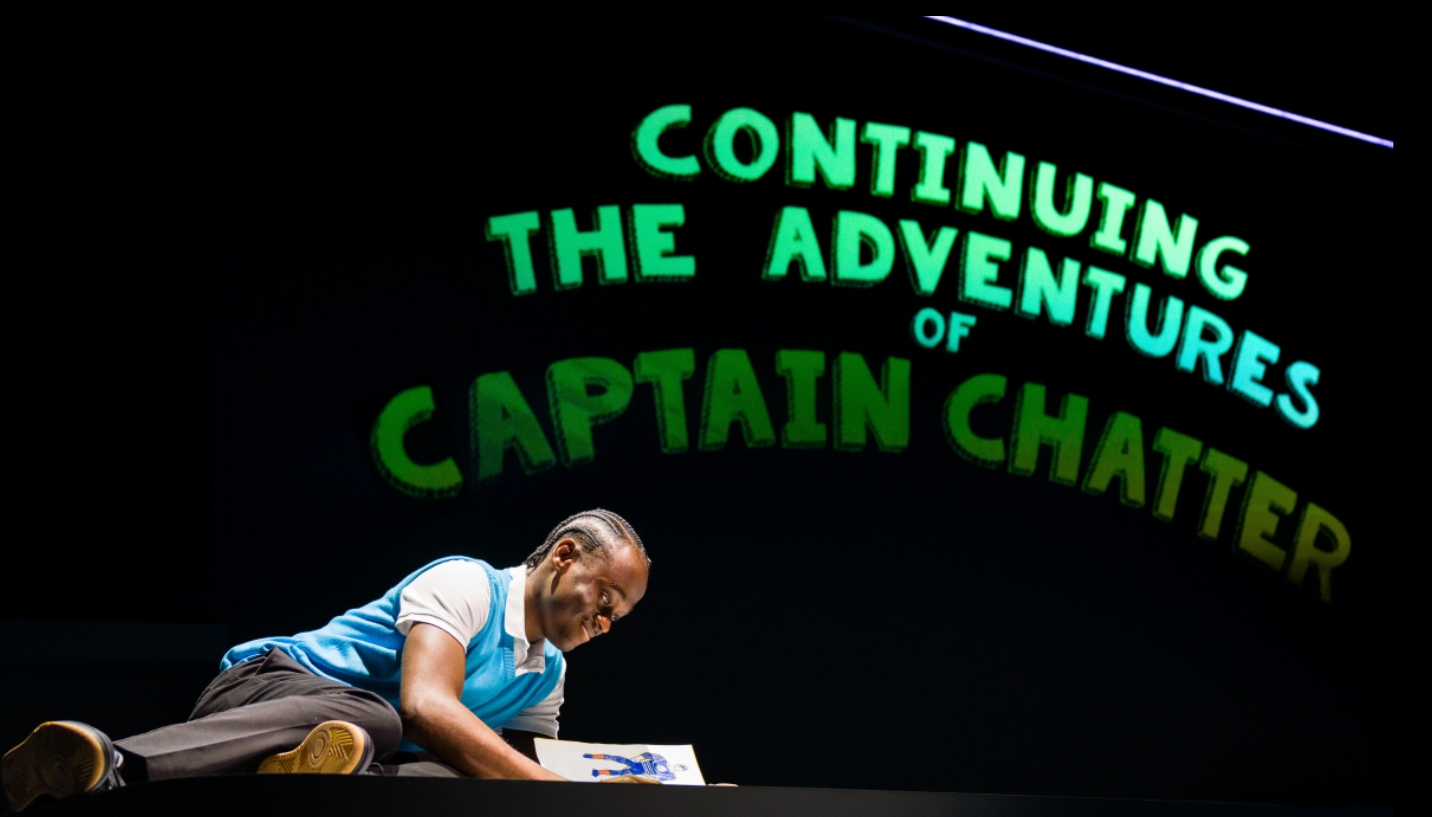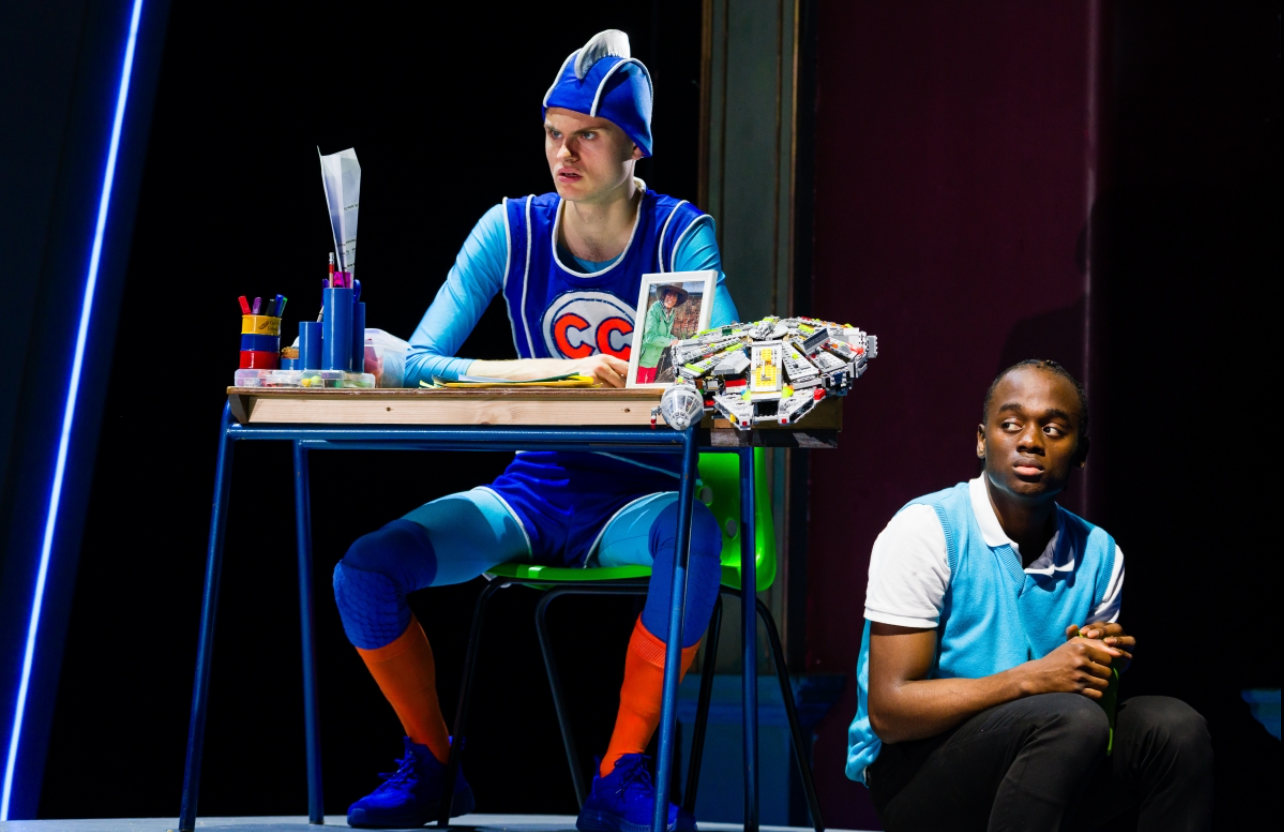Two years after its premiere, Wonderboy returns to the Bristol Old Vic this autumn as part of its UK tour. It follows thirteen-year-old Sonny who tackles a stammer which means he struggles to say his own name. His struggles are both visually and verbally illustrated with a creative set, projected captions, clever script and quirky characters.
Along the way, he meets a new chaotic best friend, an evil headteacher and a comic book character. As the story develops, we learn more about Sonny’s past and why his stammer is so prominent while also discovering that Sonny is less alone than he thinks.

The script is strong, yet sometimes lines and jokes are lost due to timing and pace. However, the language depicts the mayhem and brutality of secondary school accurately, with banter and insults flying back and forth between pupil and teacher like lightning.
The comedy sometimes undermines moments that could have more weight. The clearest example of this is the superhero we meet in the first scene, Captain Chatter. Rather than enhancing the narrative, he sometimes distracts from it, and it’s not always clear whether Captain Chatter is meant to personify the stammer holding Sonny back or to serve as a mascot encouraging him to communicate.
The performances from Naia Elliott-Spence as Roshi and Hilson Agbange as Sonny were heartfelt if a little forced in moments - likely due to the childlike nature of their characters. A special mention goes to Eva Scott, who was brilliant as Wainwright, balancing the role with nuance and emerging as the true hero of the piece. She’s the teacher you always wished you had.
Visually, the creative use of projected captions on the backdrop is a brilliant addition, forcing you to focus on exactly what is being said and how. With communication and the value of words as central themes, it’s fitting that this element serves as the lynchpin of the set.
This show would be fantastic for a school tour, though adapting the set to fit different school halls could be tricky due to the projections. The swearing, while not entirely necessary, could be toned down, making this a powerful piece to show children in late primary or early secondary school.



Comments